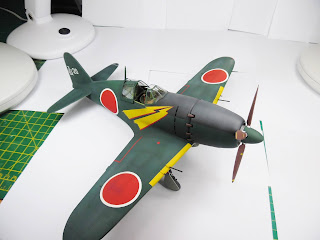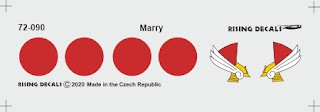Hot on the heels of his superlative
Ki-15-II model Dan Salamone has kindly shared these images and build notes on his latest
Hasegawa 1/48 TX 40 truck project. In his own words then:-
"Hi all, here is my recently completed Isuzu TX40 project in 1/48 scale. The base kit comes from Hasegawa, and is my fourth project using this kit. The vehicle itself is a narrow cab cargo truck, with a cargo bed that was both wider, and longer, than the standard TX40. I have two different images of this rare variant of the vehicle, one carrying a Type 91 torpedo at an airfield where Betty bombers were based, and another immediately post-war.
"I started the process by making drawings of the parts which needed to be changed: fenders, cab, canvas roof, running boards, and the entire cargo bed. In essence, the kit parts used were the chassis, wheels and tires, and the hood and interior (which was heavily modified). I used Evergreen plastic, as well as some brass strips and rod. The spare tire carrier under the rear chassis was created by using brass strips, and a photo etched bending tool.
"The cargo bed is totally scratch built, and also features detail which even though cannot be seen, was needed to be able to align and attach the finished bed to the chassis. I also had to add to the length of the chassis as well. I used two layers of Evergreen plastic sheet, cut to size. Then I scribed the panel lines in, and then used a metal wore brush to ass wood grain effect to the plastic.
"The torpedo was robbed from a Hasegawa kit of the Kate, the oil barrels and tool box come from the basic TX40 kit.
"I used a custom mix of
Vallejo acrylics for the IJN dark blue paint, and for the wood cargo bed, used the Vallejo acrylic set for old and new wood effects. Weathering for the truck was from
MiG 'Oilbrushers',
AK Interactive weathering pencils, and Vallejo washes and paints. Final clear coat is
Gunze flat lacquer from a spray can.
"The rope is a product called '
EZ Line' which my local hobby shop carries. It was an exceptional product to use, as it stretches, and accepts super glue very well. Prior to attaching the product, I gave it repeated washes of Vallejo acrylic paints to give it some color and subtle detail.
"This project was about five years in the making, from originally seeing the pictures, to the drawings, then the actual building and painting to completion."
So many details and techniques to appreciate and enjoy in these images. With special thanks to Dan for sharing them here. Keep on trucking and please keep 'em coming Dan!
Image credit: All © 2020 Dan Salamone

































































